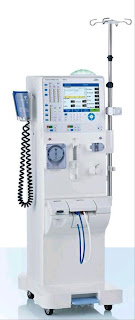Persoanal Digital Health equipment List
Personal digital health equipment refers to devices and tools that individuals can use to monitor and manage their own health and well-being. These devices are typically designed for home use and often connect to mobile apps or online platforms to provide health-related data and insights. Here's a list of personal digital health equipment: 1. **Smartwatches and Fitness Trackers**: - Apple Watch - Fitbit trackers - Garmin smartwatches - Samsung Galaxy Watch 2. **Blood Pressure Monitors**: - Omron Blood Pressure Monitor - Withings BPM Connect - iHealth Wireless Blood Pressure Monitor 3. **Blood Glucose Monitors**: - OneTouch Verio - Freestyle Libre - Contour Next 4. **Continuous Glucose Monitors (CGMs)**: - Dexcom G6 - Freestyle Libre - Medtronic Guardian Connect 5. **Pulse Oximeters**: - Nonin GO2 Achie...




